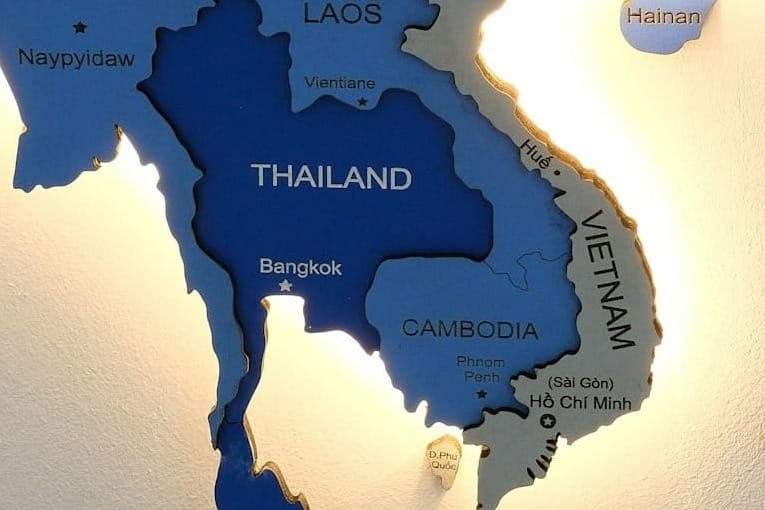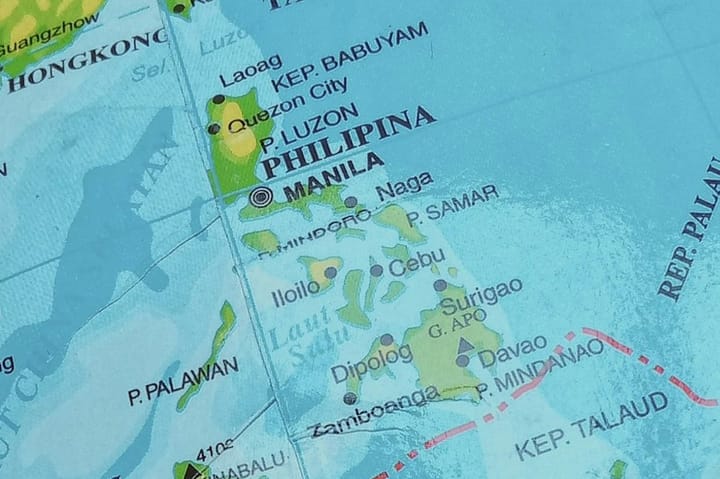FLASHPOINTS: Thailand-Cambodia Border Escalation - Regional Security Implications
Thailand-Cambodia border clashes escalated on 24 July 2025, killing 16 people and displacing 138,000 civilians. Fighting began after Thai soldiers were wounded by landmines, prompting mutual expulsion of ambassadors and complete border closure.

Bottom line up front:
- Armed clashes between Thailand and Cambodia began on 24 July 2025, resulting in at least 16 confirmed fatalities across eight locations spanning 270 kilometres. Fighting represents the most intense bilateral military confrontation since 2011, with Thailand conducting unprecedented F-16 airstrikes against Cambodian positions.
- Thailand stated it "fully agrees in principle" with Malaysia's ceasefire proposal but demanded "appropriate on-the-ground conditions," citing continued Cambodian attacks. Cambodia backed the Malaysian proposal but accused Malaysia of withdrawing initial support, highlighting diplomatic complications in mediation efforts.
- Economic disruption includes complete border closure halting $5 billion in annual bilateral trade and affecting hundreds of thousands of Cambodian migrant workers. Military preparations documented since February 2025 indicate sustained escalation rather than spontaneous conflict.
- The crisis exposes fundamental weaknesses in ASEAN conflict prevention mechanisms, with Malaysia's chairmanship unable to compel member state compliance with regional stability norms despite direct diplomatic intervention.
Overview
Armed clashes between Thailand and Cambodia erupted on 24 July 2025, transforming months of diplomatic tensions into the bloodiest border fighting between the two countries since 2011. Thai forces deployed F-16 fighter jets against Cambodian positions whilst Cambodia responded with BM-21 rocket systems, resulting in 15 Thai deaths (14 civilians, 1 soldier) and 1 Cambodian civilian fatality as of 25 July 2025. The conflict expanded from 6 initial locations to 12 contested areas along the 800-kilometre frontier, forcing evacuations of 138,000 Thai civilians and approximately 20,000 Cambodians according to official government statements.
The immediate trigger occurred on 23 July when Thai soldiers were wounded by landmines, the second such incident within a week. According to detailed timeline analysis, over 400 PMN-2 landmines had been planted by Cambodian forces in July 2025 along disputed border areas. Thailand expelled Cambodia's ambassador and recalled its own envoy following the landmine incident. Cambodia reciprocated by downgrading diplomatic relations. The landmine incident followed a pattern of escalating provocations since May 2025, when a Cambodian soldier was killed in cross-border fighting at the disputed Emerald Triangle.
Thailand's Acting Premier Phumtham Wechayachai stated on 25 July that the conflict "could develop into war." Cambodia accused Thailand of using cluster munitions, which Thailand's Foreign Ministry has not responded to according to Reuters reporting. Cambodia reported damage to the UNESCO World Heritage Preah Vihear temple and stated it would pursue international legal action.
Background Context
The breakdown of personal relations between political leaders significantly damaged bilateral relations. Hun Sen serves as Cambodia's Senate President and father to Prime Minister Hun Manet, who assumed the premiership in 2023. Thaksin Shinawatra is father to Paetongtarn Shinawatra, who became Prime Minister in 2024 but was suspended by Thailand's Constitutional Court pending ethics violation investigations related to a leaked phone conversation. The leaked phone call damaged longstanding ties between political families that had previously managed bilateral tensions through informal channels. Hun Sen had provided sanctuary to supporters of the Shinawatra political network following previous military interventions in Thailand. Hun Sen remains influential as Senate President whilst his son Hun Manet serves as Prime Minister.
The territorial disputes could be traced to French colonial mapping in 1907. The contested areas involve four ancient Khmer temples in the Dangrek mountain range. The International Court of Justice ruled in Cambodia's favour regarding Preah Vihear temple in 1962 and reaffirmed this decision in 2013. Thailand rejects ICJ jurisdiction over broader border demarcation according to official statements.
The current military confrontation follows escalating tensions documented through satellite imagery and field reports since February 2025. On 13 February, Cambodian soldiers escorted civilians to visit the disputed Ta Muen Thom temple, where they sang the Cambodian national anthem before being stopped by Thai security officials. Between February and July, satellite imagery documented extensive Cambodian military preparations including fortified positions and tank deployments. In May 2025, one Cambodian soldier was killed in fighting at the Emerald Triangle area. Cambodia subsequently surged 800-1,000 troops and strategic assets to the border. Thailand implemented border restrictions and trade boycotts, completely closing the border on 23 June 2025.
Military Assessment
Force Dispositions and Capabilities
Thailand deployed F-16 fighter aircraft in at least two separate airstrikes against Cambodian artillery and rocket positions, marking unprecedented use of air power in bilateral border disputes. Cambodia employed BM-21 rocket systems targeting both military positions and civilian infrastructure across Thai border provinces. Thailand possesses 361,000 active military personnel against Cambodia's approximately 120,000 according to available defence data.
Cambodia's force structure includes tank battalions and artillery units positioned at forward locations. Thailand maintains larger conventional forces and advanced aircraft capabilities. Both sides employed heavy weapons including rocket systems and artillery during the 24-25 July fighting.
Tactical Developments
Cambodia established fortified positions across multiple hill features in contested border areas between February and July 2025. These positions provide observation points and defensive capabilities overlooking key approaches. Thailand constructed defensive positions and improved access roads to disputed temple areas during the same period.
Anti-personnel mines were deployed in contested areas during July 2025. The mines involved are of a type not employed by Thai forces, according to Thai military statements. Multiple incidents involving Thai soldiers stepping on mines occurred in areas where new defensive positions had been established.
Both sides claimed self-defence in fighting that began near Ta Muen Thom temple, one of four areas where the border remains undemarcated due to territorial disputes. Cambodia fired rockets that struck civilian areas including a hospital in Surin province and a petrol station in Sisaket province. Thailand responded with F-16 airstrikes against Cambodian artillery and rocket batteries, according to military statements.
Intelligence and Surveillance
Both sides employed surveillance drones for reconnaissance and battle damage assessment. Thailand's possession of advanced F-16 avionics systems provides superior intelligence, surveillance, and reconnaissance capabilities compared to Cambodia's limited air assets. However, Cambodia's ground-based observation posts on elevated terrain features offer tactical early warning capabilities across key approaches.
Strategic Assessment
Escalation Dynamics
Military preparations documented since February 2025 demonstrate sustained planning rather than reactive crisis response. Fortification activities across multiple contested areas preceded the May 28 incident by several months, indicating deliberate territorial consolidation efforts.
The conflict tests established security partnerships and regional institutions. Malaysia's ASEAN chairmanship faces complex mediation challenges, with both sides expressing conditional support for ceasefire proposals whilst maintaining incompatible implementation requirements. Thailand demands cessation of Cambodian attacks before ceasefire implementation whilst Cambodia questions Malaysian commitment to the proposal.
Both countries' rejection of external mediation from the United States, China, and Malaysia indicates domestic political considerations override international partnership obligations when core territorial interests are perceived as threatened.
Current Status and Implications
Malaysia's ceasefire proposal has received conditional support from both sides, though with conflicting interpretations. Thailand stated it "fully agrees in principle" but cited continued Cambodian attacks as preventing implementation, demanding "appropriate on-the-ground conditions." Cambodia backed the proposal but accused Malaysia of withdrawing initial support, creating diplomatic complications for ASEAN mediation efforts.
Fighting continues across multiple locations with both governments indicating expectation of prolonged operations. Thailand evacuated 138,000 civilians whilst Cambodia evacuated approximately 20,000 residents. Complete border closure eliminates $5 billion in annual bilateral trade and affects an estimated 500,000-1,000,000 Cambodian migrant workers.
Bilateral dispute resolution mechanisms remain constrained by incompatible legal positions. Cambodia seeks International Court of Justice adjudication whilst Thailand rejects ICJ jurisdiction, preferring bilateral negotiations. The conditional ceasefire responses suggest potential diplomatic openings despite continued military operations.
The conflict represents the first interstate warfare between ASEAN members since 2011, challenging assumptions about economic integration preventing military confrontation. Malaysia's failed mediation demonstrates organisational constraints when domestic political calculations override regional stability considerations. The precedent creates escalation risks for other contested areas where multiple member states maintain overlapping claims.
Why it matters
Armed military confrontation between ASEAN members represents the most serious challenge to regional stability mechanisms since the organisation's establishment of conflict prevention norms. The failure of established diplomatic channels and rejection of multilateral mediation demonstrates how domestic political imperatives can override institutional frameworks designed to maintain interstate peace.
The speed of escalation from diplomatic tensions to sustained military operations illustrates the fragility of territorial dispute management when political relationships collapse. Military preparations documented months before active hostilities validate requirements for enhanced early warning systems and preventive diplomacy mechanisms throughout Southeast Asia.
Economic disruption extending beyond immediate combatants affects regional supply chains and labour markets, demonstrating interconnectedness vulnerabilities in an integrated Southeast Asian economy. The precedent of accepting severe economic costs to pursue territorial objectives creates risks for investor confidence and regional economic stability.
For security practitioners throughout the region, the crisis provides critical lessons about the limitations of personal diplomatic relationships in managing interstate tensions. The breakdown of informal conflict management mechanisms highlights requirements for robust institutional alternatives when individual relationships fail to contain territorial disputes.



